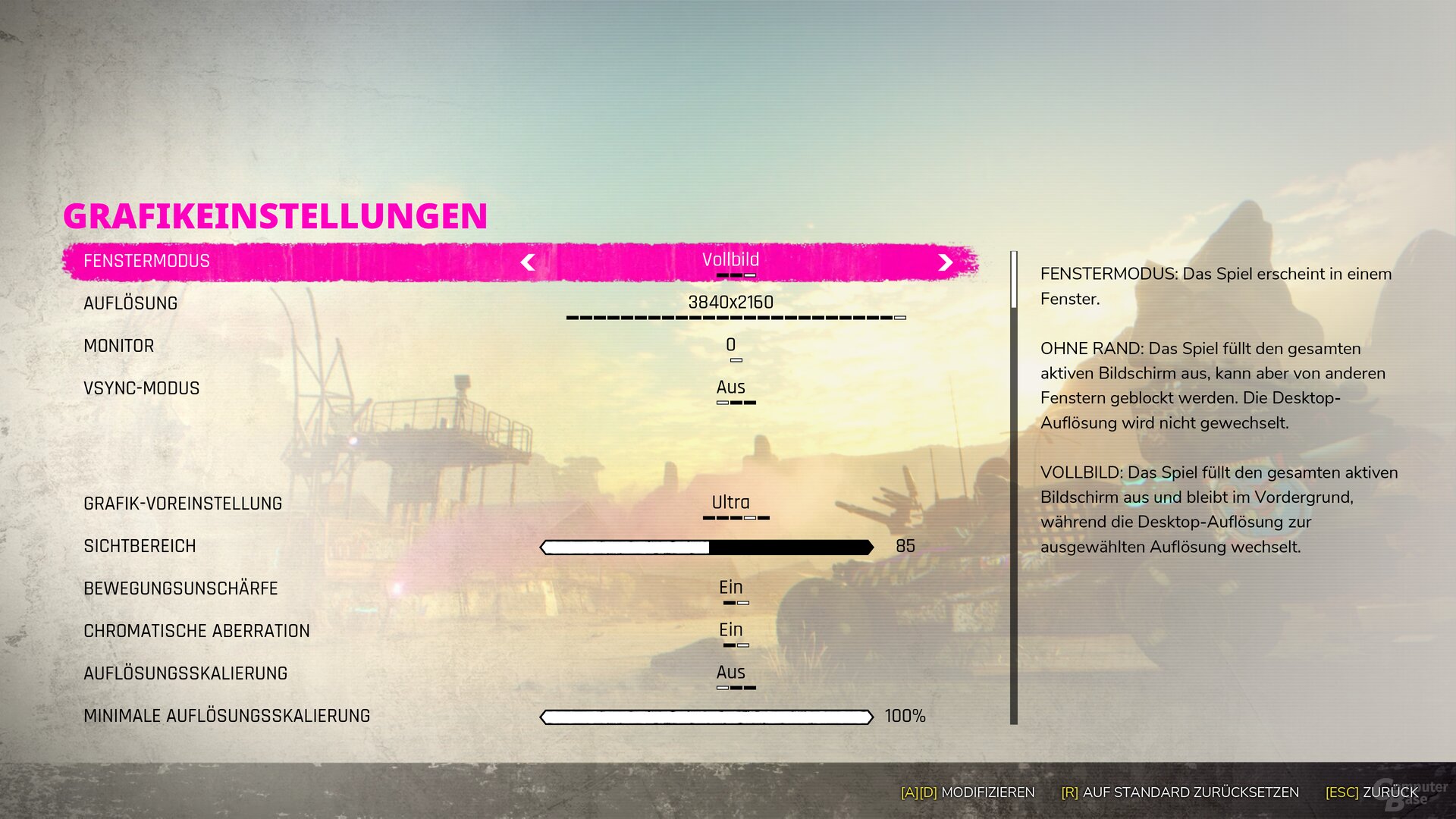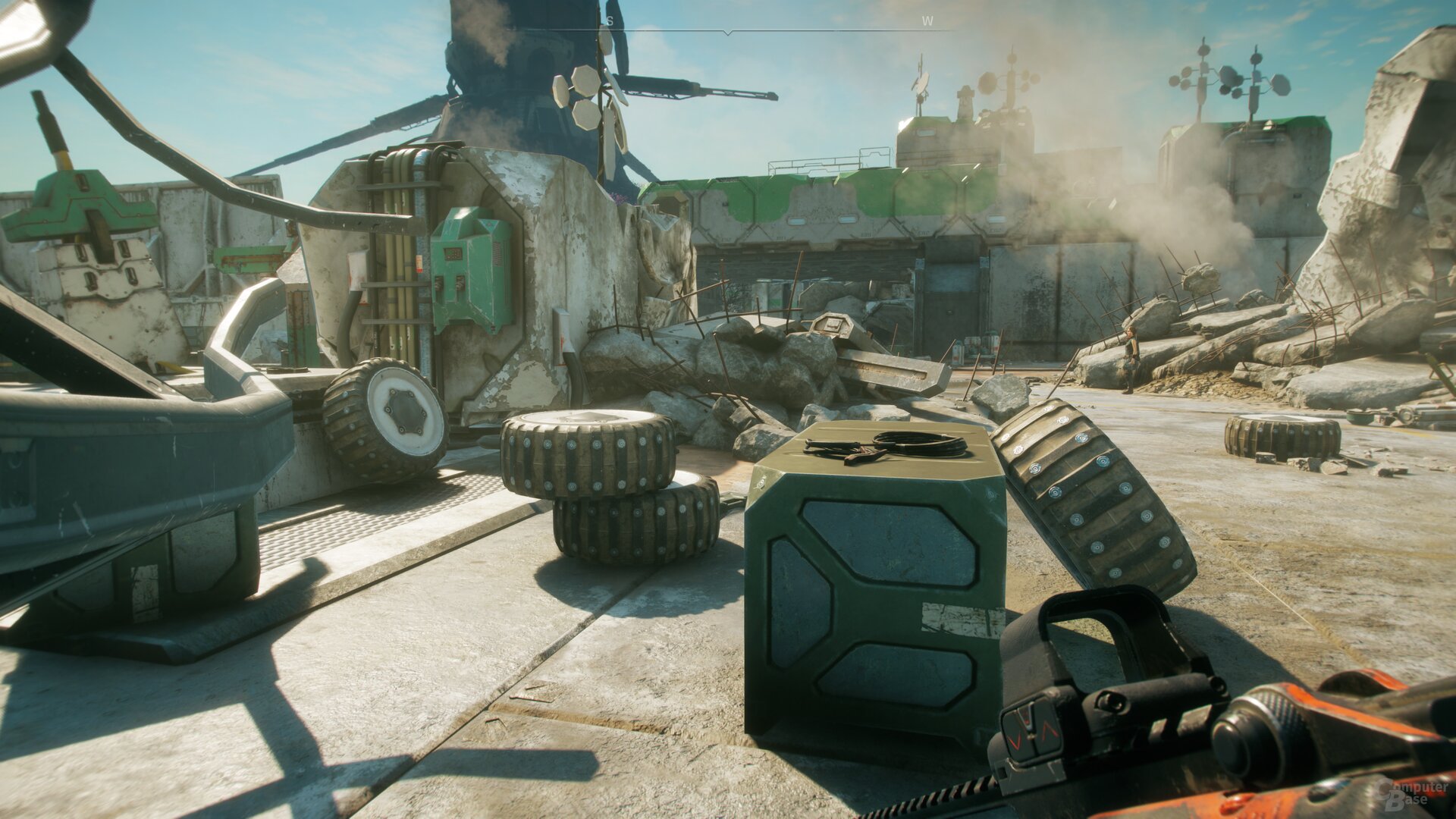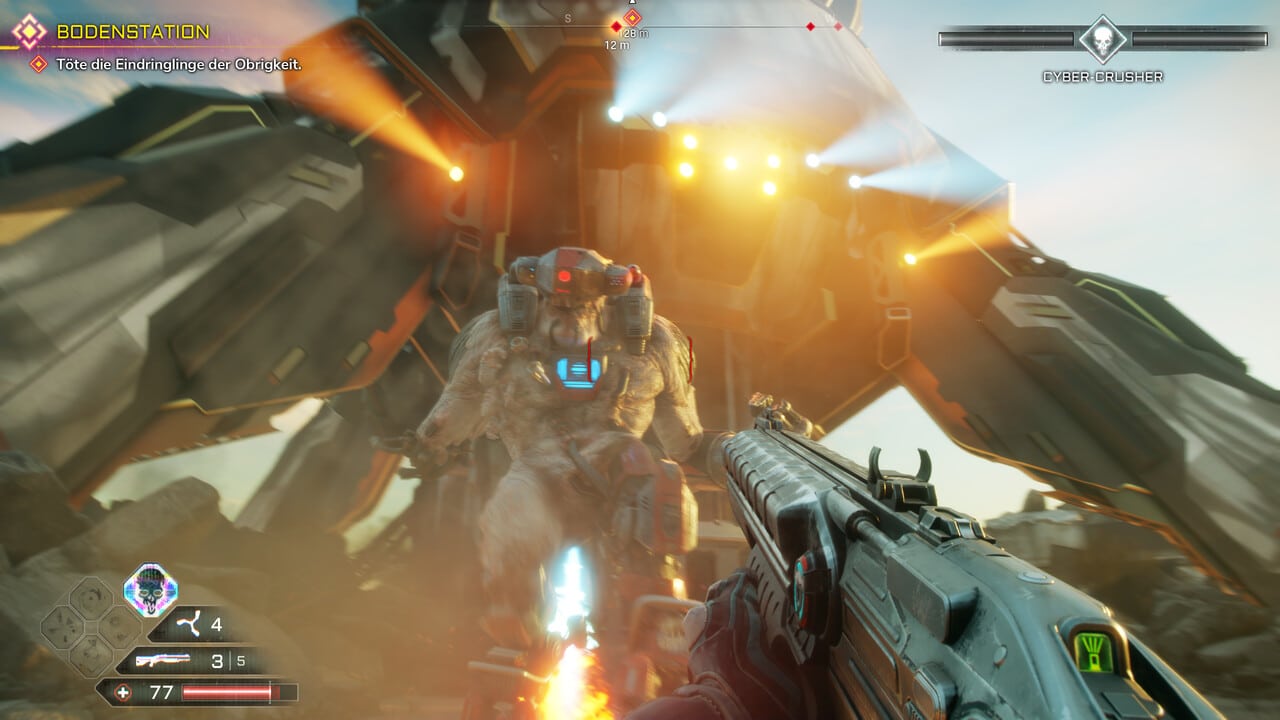– The crazy Rage 2, which was developed in cooperation with Avalanche Studios and id Software, only uses the Vulkan API on the PC. GPU benchmarks show decent performance with good graphics. Nvidia Turing and especially AMD Radeon are doing well, while Pascal is weak.
After “only” one developer studio was responsible for Rage (2011) with id Software, Rage 2 was developed by two studios: The main work was carried out by the Avalanche Studios, which delivered a rather average game with Just Cause 4 at the end of last year. As the second developer, id Software stayed on board and mainly dealt with the “weapon feeling”.
APEX engine always with volcano
Both developer studios have their own graphics engines in their portfolio. Of these, id Softwares id Tech is clearly the more impressive that is brought to version id Tech 7 for Doom Eternal. Avalanche’s APEX engine, on the other hand, had and has to struggle with some vulnerabilities in Just Cause 4, but can deal with an Open World – and is therefore the engine used in Rage 2. But the all-clear can be given at this point: Rage 2 looks significantly better graphically than Just Cause 4 and there were no major problems in the test.
Rage 2 doesn’t look bombastic on the PC, but it does look good. The game knows how to please with chic lighting and, due to the sometimes very colorful look, creates its own atmosphere that matches the end-time scenario. In contrast to Just Cause 4, the anti-aliasing was significantly drilled out in rage 2. In addition, the loading times are shorter and DirectX 11 is no longer used. Rage 2 uses the low-level API Vulkan instead – id software certainly helped with its implementation. There is no other API.
Rage 2 does not appear to be participating in an AMD or Nvidia game program. At least there is no logo of the Radeon or GeForce developers to see and there are no corresponding graphic effects.
The technology test clarifies exactly how Rage 2 performs on the PC. In addition to a look at the graphics menu and anti-aliasing, the main focus is on graphics card benchmarks.
The graphics menu of Rage 2 is quite extensive on the PC, but there are only one exciting options in the end: the dynamic resolution that can be switched on and off, which keeps the frame rate at an adjustable level by reducing the resolution used. The desired frame rate can be freely configured between 20 FPS and 240 FPS, the resolution also freely between 10 percent and 100 percent of the set resolution.
If, for example, 60 FPS and 50 percent resolution are set, this means that the game automatically reduces the resolution to a maximum of 50 percent of the set resolution in order to maintain the 60 FPS. In addition to manual configuration, there is also an automatic function.
- The graphics menu
image 1 Of 3

In addition to the standard, VSync in Rage 2 can not only be switched on or off, but also set to a “mix mode”. This listens to the designation “soft” and automatically deactivates VSync when the rendered frame rate falls below the refresh rate of the monitor. In this case there is tearing, but the input lag decreases and the frame rate itself can be a bit higher. However, if the graphics card can render more FPS than the refresh rate, VSync remains activated in the classic way.
That being said, there are many other options in the graphics menu to improve performance at the expense of graphics. However, there are no convenience functions such as example screenshots, an FPS limiter or other functions.
Conditional tuning potential with four graphics presets
With “Low”, “Medium”, “High” and “Ultra” there are four different graphic presets in Rage 2. If you want to have more performance at the expense of graphics, you have to visibly lose quality at every smaller level. Apparently, high instead of ultra uses less tessellation, which means that several objects become more angular. The much bigger problem is that it gets even more aggressive on Ultra quite aggressive LOD. For this reason, some objects appear at high just before the player out of nowhere. This is difficult to see on screenshots and is only really noticeable in motion.


The middle level then makes some details disappear, so that some objects appear less three-dimensional. In addition, the shadows are easier and the LOD system works even more aggressively. Medium is the last acceptable level. The low preset continues with the same set screws, with the result that the shadows already show graphic errors. In connection with the even flatter-looking world and the now extremely aggressive LOD, Rage 2 no longer looks good.
Graphics Presets in Rage 2
- Low-Preset
- Central Preset
- High-Preset
- Ultra-Preset
With the graphics setting high, Rage 2 hardly runs faster than Ultra. The Radeon RX Vega 64 only increases by six percent, the GeForce RTX 2070 by only three percent. On the other hand, medium is an orderly step, then the frame rate improves by 23 or 26 percent. The low preset brings an increase of 22 percent FPS on a Radeon, 28 percent on a GeForce. The sensible tuning potential (middle preset) with Rage 2 is limited with 30 percent.
The anti-aliasing is better, but not good
Just Cause 4 has poor anti-aliasing and the counterpart in Rage 2 is not a revelation either, but it works better. The post-processing variants FXAA, TAA and a mixture of both are available. In the end, only the “FXAA + TAA” hybrid mode is recommended, since it clearly offers the best smoothing. However, this does not mean that the picture is flicker-free: it still flickers clearly in low resolutions like Full HD. In Ultra HD, however, the picture is very calm. All modes create a blur. Again, the annoying effect is clearly visible in Full HD, but is hardly noticeable (WQHD) or not at all (Ultra HD) in higher resolutions.
Regardless of the graphics card used, the best anti-aliasing in Rage 2 costs eight percent in performance. FXAA reduces the frame rate by one percent on a Radeon RX Vega 64, and three percent on a GeForce RTX 2070. TAA, on the other hand, costs a little more FPS with four or six percent.
Anti-aliasing in rage 2
- Out
- FXAA
- TAA
- FXAA + TAA
On the next page: GPU benchmarks with frame times
















